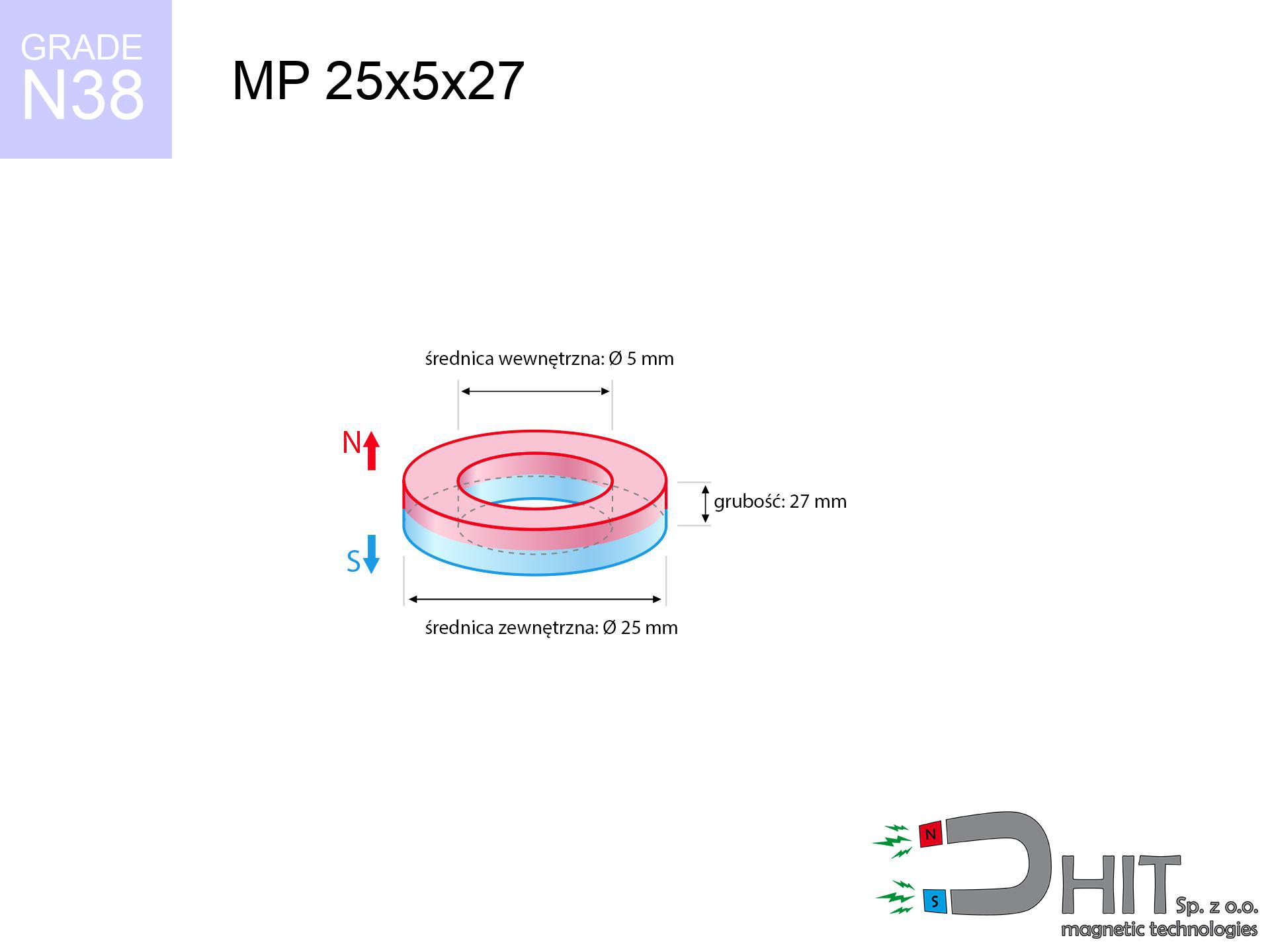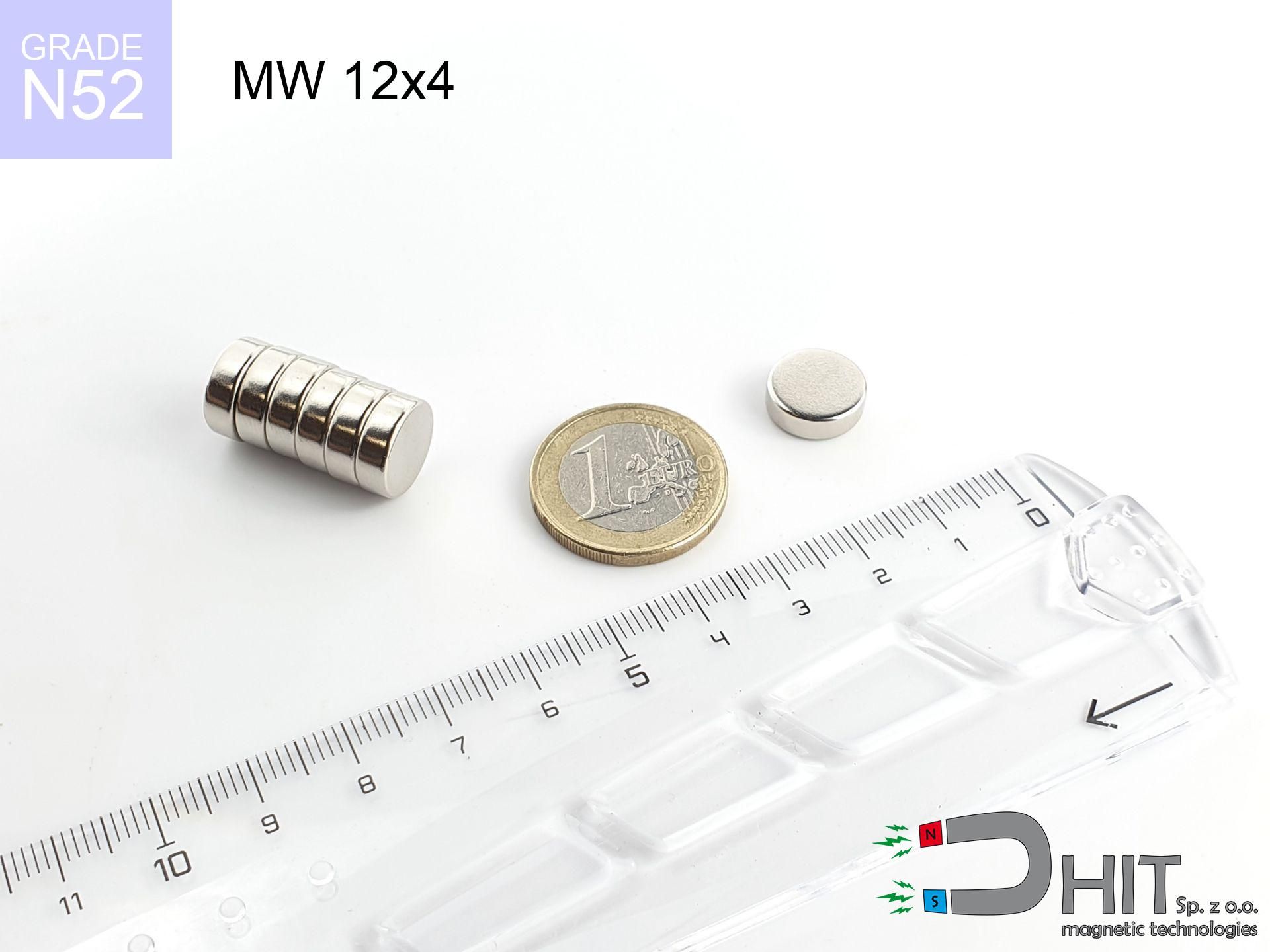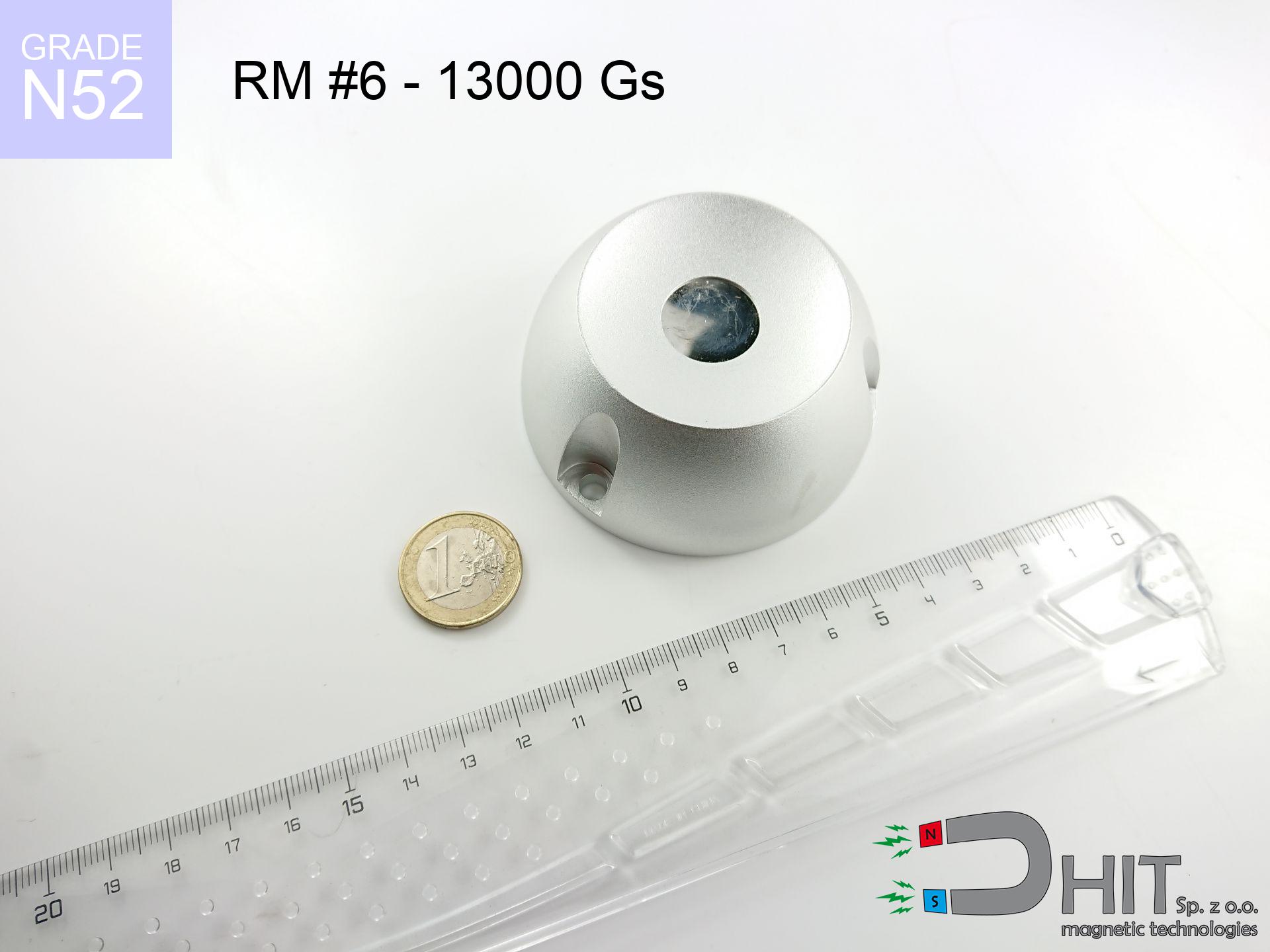MP 25x5x27 / N38 - ring magnet
ring magnet
Catalog no 030192
GTIN: 5906301812098
Diameter [±0,1 mm]
25 mm
internal diameter Ø [±0,1 mm]
5 mm
Height [±0,1 mm]
27 mm
Weight
127.23 g
Magnetization Direction
↑ axial
Load capacity
7.7 kg / 75.51 N
Magnetic Induction
53.48 mT
Coating
[NiCuNi] nickel
47.18 ZŁ with VAT / pcs + price for transport
38.36 ZŁ net + 23% VAT / pcs
bulk discounts:
Need more?Hunting for a discount?
Give us a call
+48 22 499 98 98
or contact us via
contact form
the contact page.
Specifications along with structure of magnets can be estimated using our
magnetic calculator.
Same-day shipping for orders placed before 14:00.
Magnetic properties of material N38
Physical properties of sintered neodymium magnets Nd2Fe14B at 20°C
Shopping tips
Advantages and disadvantages of rare earth magnets.
Besides their stability, neodymium magnets are valued for these benefits:
- They have unchanged lifting capacity, and over around ten years their attraction force decreases symbolically – ~1% (in testing),
- Magnets effectively defend themselves against demagnetization caused by ambient magnetic noise,
- The use of an aesthetic finish of noble metals (nickel, gold, silver) causes the element to look better,
- Magnetic induction on the working part of the magnet turns out to be extremely intense,
- Due to their durability and thermal resistance, neodymium magnets are capable of operate (depending on the shape) even at high temperatures reaching 230°C or more...
- Possibility of individual shaping and optimizing to concrete requirements,
- Huge importance in modern technologies – they find application in data components, brushless drives, advanced medical instruments, as well as industrial machines.
- Relatively small size with high pulling force – neodymium magnets offer impressive pulling force in tiny dimensions, which enables their usage in small systems
Disadvantages of NdFeB magnets:
- At very strong impacts they can break, therefore we recommend placing them in special holders. A metal housing provides additional protection against damage, as well as increases the magnet's durability.
- Neodymium magnets decrease their force under the influence of heating. As soon as 80°C is exceeded, many of them start losing their force. Therefore, we recommend our special magnets marked [AH], which maintain stability even at temperatures up to 230°C
- They oxidize in a humid environment - during use outdoors we suggest using waterproof magnets e.g. in rubber, plastic
- We recommend casing - magnetic mount, due to difficulties in producing nuts inside the magnet and complex shapes.
- Health risk related to microscopic parts of magnets pose a threat, when accidentally swallowed, which gains importance in the context of child health protection. Furthermore, small elements of these devices are able to complicate diagnosis medical after entering the body.
- With budget limitations the cost of neodymium magnets can be a barrier,
Breakaway strength of the magnet in ideal conditions – what contributes to it?
The force parameter is a measurement result conducted under specific, ideal conditions:
- on a base made of structural steel, optimally conducting the magnetic flux
- possessing a thickness of min. 10 mm to ensure full flux closure
- with a plane perfectly flat
- under conditions of gap-free contact (surface-to-surface)
- during detachment in a direction vertical to the plane
- at standard ambient temperature
Lifting capacity in real conditions – factors
Effective lifting capacity impacted by specific conditions, such as (from priority):
- Space between magnet and steel – even a fraction of a millimeter of distance (caused e.g. by varnish or unevenness) diminishes the magnet efficiency, often by half at just 0.5 mm.
- Loading method – catalog parameter refers to pulling vertically. When applying parallel force, the magnet exhibits significantly lower power (typically approx. 20-30% of maximum force).
- Steel thickness – insufficiently thick plate does not accept the full field, causing part of the flux to be lost to the other side.
- Metal type – not every steel reacts the same. Alloy additives weaken the interaction with the magnet.
- Surface finish – ideal contact is obtained only on polished steel. Rough texture create air cushions, reducing force.
- Temperature influence – high temperature reduces pulling force. Exceeding the limit temperature can permanently damage the magnet.
* Holding force was checked on the plate surface of 20 mm thickness, when the force acted perpendicularly, however under parallel forces the load capacity is reduced by as much as 75%. In addition, even a slight gap {between} the magnet and the plate decreases the holding force.
Precautions when working with neodymium magnets
Serious injuries
Large magnets can break fingers in a fraction of a second. Do not place your hand between two attracting surfaces.
Flammability
Fire warning: Rare earth powder is highly flammable. Avoid machining magnets without safety gear as this risks ignition.
Medical interference
Warning for patients: Strong magnetic fields affect medical devices. Keep minimum 30 cm distance or ask another person to work with the magnets.
Swallowing risk
Product intended for adults. Small elements can be swallowed, causing serious injuries. Keep out of reach of children and animals.
Nickel coating and allergies
Allergy Notice: The nickel-copper-nickel coating consists of nickel. If an allergic reaction happens, cease handling magnets and use protective gear.
GPS Danger
Navigation devices and mobile phones are extremely sensitive to magnetic fields. Direct contact with a strong magnet can decalibrate the internal compass in your phone.
Safe distance
Powerful magnetic fields can erase data on payment cards, hard drives, and storage devices. Keep a distance of min. 10 cm.
Power loss in heat
Monitor thermal conditions. Heating the magnet above 80 degrees Celsius will destroy its magnetic structure and strength.
Fragile material
Neodymium magnets are sintered ceramics, which means they are fragile like glass. Collision of two magnets will cause them cracking into small pieces.
Do not underestimate power
Handle magnets with awareness. Their huge power can surprise even experienced users. Be vigilant and respect their power.
Attention!
More info about risks in the article: Safety of working with magnets.



![UMGW 25x17x8 [M5] GW / N38 - magnetic holder internal thread UMGW 25x17x8 [M5] GW / N38 - magnetic holder internal thread](https://cdn3.dhit.pl/graphics/products/um-25x17x8-m5-gw-dob.jpg)




